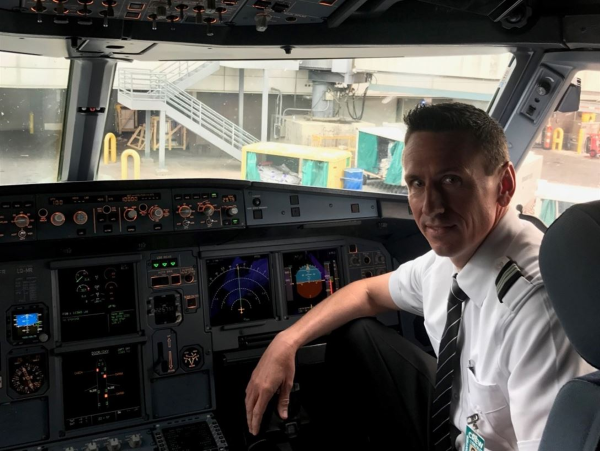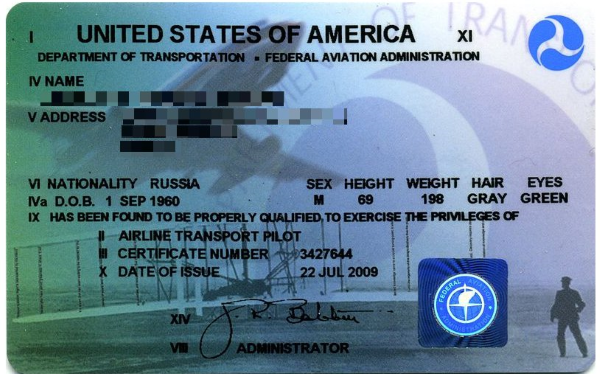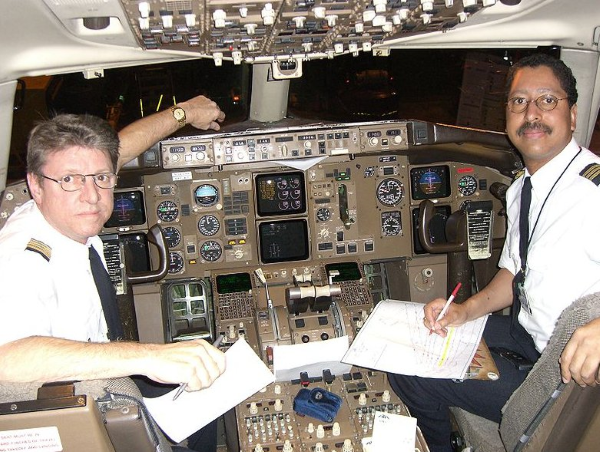In the United States, pilot certification is regulated by the Federal Aviation Administration (FAA).
The FAA has various types of pilot ratings depending on logged flight time, experience and type of operation, such as airline travel or carrying persons or cargo for compensation or hire.
The highest level of pilot certification available is an Airline Transport Pilot (ATP) certificate.
All pilots start training by initially earning a Private Pilot Certificate, Instrument Rating, and then Commercial Pilot Certificate, logging additional hours and experience with each rating, ultimately being able to earn the ATP certificate.
Following the Colgan Air Flight 3407 crash on February 12, 2009, of a Bombardier Dash-8 Q400, killing all 49 passengers and crew on board, the FAA implemented numerous pilot training and testing rule changes, in areas including pilot fatigue and ATP certifications and experience required prior to handling.
The accident report suggested that the captain had a history of failed checkrides, both pilots were tired, and the first officer complained of not feeling well before takeoff.
As a result, the FAA took swift action, and on August 1, 2010, President Obama signed PL 111-216, The Airline Safety and Federal Aviation Administration Extension Act of 2010, into law, which set forth numerous requirements for improving the safety of the American flying public.
Section 217 of the PL 111-216 specifically required the FAA Administrator to conduct a rulemaking that modifies the requirements to earn an Airline Transport Pilot (ATP) license.
Related: 5 Best Low Time Pilot Jobs With 250 – 500 Or More Hours
What is an Airline Transport Pilot?

An Airline Transport Pilot is the highest level of aircraft pilot certificate, allowing a pilot to act as pilot in command on a scheduled air carrier aircraft, the kind of plane you fly if you buy a ticket on a commercial airliner.
It’s important to note, if the aircraft being flown weighs more than 12,500 pounds, the pilot is also required to have a “type rating” allowing them to safely and legally operate a specific type of aircraft.
This is spelled out in FAR 61.31(a): “A person who acts as a pilot in command of any of the following aircraft must hold a type rating for that aircraft: Large aircraft [or] turbojet-powered airplanes.”
What are the ATP Requirements?
Before becoming an airline pilot, pilots must earn their Private Pilot Certificate, Instrument Rating, and Commercial Pilot Certificate.
Typically, these ratings are initially obtained in a single engine aircraft such as a Cessna 172 Skyhawk or Piper Cherokee.
Each rating has specific training requirements, beyond the scope of this article, consisting of required flight hours logged, procedures taught, and miles flown.
Flight hours logged and experience gained from Private, Instrument and Commercial Ratings will count towards ATP certification.
To get an ATP rating, an individual must be 23 years old, be of good moral character, and have met the following flying requirements:
- 1,500 total time
- 500 hours cross-country flying
- 100 hours night flying
- 75 hours instrument flying
- 250 hours PIC
- 50 hours of multiengine (if pursuing ATP multiengine).
As of July 31, 2014, pilots must take and complete an Airline Transport Pilot Certification Training Program (ATP CTP) before sitting for the ATP written exam.
The written exam is 90 questions for ATP single-engine, and 125 questions for ATP multi-engine.
For example, to obtain an instrument rating, a pilot must complete at least 50 hours of cross-country flight time as pilot-in-command, including 15 hours of instrument flight training from an instructor.
A pilot applying for a Commercial Pilot Certificate must have logged at least 250 hours of flight time, with additional requirements for flying at night.
Related Article – 12 Runway Markings and Signs Explained By An Actual Pilot
How do you get an ATP certificate?

To get your ATP certificate, you’ll first need to get your Private Pilot Certificate, Instrument Rating and Commercial Pilot Certificate.
Although it is possible to get an ATP certificate in a single-engine aircraft such as a Pilatus, realistically, for any airline job, you will need an ATP certificate in a multi-engine aircraft.
If you get your Commercial Pilot Certificate in a single-engine aircraft, you will need to get a multi-engine “add-on” rating.
Alternatively, you can get your Commercial Pilot Certificate in a multi-engine aircraft.
Many people do not go this route because it ends up being more expensive, due to the long cross-country flights required in an expensive multi-engine aircraft such as a Piper Seminole or Seneca.
Once you obtain your Commercial Pilot Certificate, you will need to time build, to log at least 1,500 hours total time.
There are two scenarios where you can get an ATP with less than 1,500 hours, and receive a “Restricted ATP” certificate.
People who flew while in the military can receive an ATP with 750 hours of experience.
Someone who attends a four-year aviation college can receive a restricted ATP at 1,000 hours, while someone who graduates from a two-year aviation college can receive a restricted ATP at 1,250 hours.
Related Article – ATP Flight School Review: My Experience as a Student
With a restricted ATP, you can only serve as a first officer of an air carrier. Check with your school about eligibility for a restricted ATP.
With a Commercial Pilot Certificate, you can legally fly for hire (as long as you aren’t operating illegal charters without a part 135 certificate).
There are numerous ways you can build time, the most common are:
- Flight instructing
- Corporate flying
- Military flying
- Air ambulance flying
- Sky-dive jump pilot flying
- Agricultural flying
- Photo survey flying
- Banner tow flying.
Another option is simply buying an airplane and flying around to build time and experience.
If money is no object and time is not critical, personal flying is a fun way to build hours and gain experience.
However, airlines and aviation companies prefer to see flying experience in a crew environment.
If you’re serious about becoming a professional pilot, consider gaining experience by flight instructing or getting a flying job.
Once you have 1,500 hours, or close to it, you can apply for jobs that require an ATP.
Reaching this 1500 hour is often referred to as reaching “ATP mins”, and will allow you to apply for regional airline jobs that require at least 1,500 hours.
The most common way pilots reach the 1,500-hour requirement is to become a flight instructor, and log time teaching others to fly.
Pilots wishing to work join the airlines may start applying short of 1500 hours, and get their ATP certificate as part of their airline type rating.
Many airlines offer the ATP CTP training, or will send you to an ATP CTP training facility.
As part of your airline pilot training, the airline will provide:
- 30 hours of classroom “ground school”
- 4 hours of flight training device
- 6 hours of full flight simulator instruction
- ATP Multi-Engine Knowledge Test administration.
The 30 hours of classroom instruction includes subjects such as aerodynamics, adverse weather conditions, air carrier operations, flight automation, airline transport category aircraft performance, professionalism, and leadership and development.
Unlike other pilot certificates that allow you to take the written test early on in the pilot training process, you will need to take the ATP CTP training prior to taking the ATP written test.
The test is challenging with a large question bank.
There are numerous study resources available that will allow you to prepare ahead of time.
As soon as you complete ATP CTP, you’re able to take the written test.
Once you pass the test, you will have five years to take an ATP check ride and actually earn your ATP Certificate.
Related Article – Instrument Proficiency Check (IPC): 3 Things You Need To Know
What pilot jobs require an ATP certificate?

Any Part 121 (airline) flying job will require you to have an ATP rating, and some Part 135 and Part 91 flying jobs will also require a captain or crewmember to have an ATP rating.
If you are serious about pursuing a professional pilot career, an ATP certificate is an important milestone that will establish your credibility as a pilot.
Other things to consider if you’re considering being an airline pilot:
Your Medical Eligibility
Health conditions can impact flying privileges.
To become an airline pilot, you will need to get a First Class Medical with an Aviation Medical Examiner (AME), either annually or every 6 months, depending on your age.
You must not have any disqualifying medical conditions, substance dependence or abuse, high blood pressure (above 155/95), and meet the vision requirements for distant and near vision.
If you have questions about whether or not you may have disqualifying medical conditions, contact the AOPA medical certification specialists or another pilot advocacy group.
Your Education
Not all airlines require a college degree, but many prefer it. If you are considering a career in aviation, a college degree, especially with an aviation major, may be beneficial.
Your Criminal History
Drug or alcohol convictions, especially DUI (“driving under the influence”) may prevent you from being hired as a professional pilot.
Airlines will conduct a 10-year background check and closely scrutinize any misdemeanors or felony convictions.
Related Article – 14 Taxiway Markings, Signs, and Lights Explained By An Actual Pilot
Summary
Logging enough time to become an Airline Transport Pilot can take years.
Most pilots are able to start making money once they receive their Commercial Pilot Certificate, which can alleviate the financial strain of time building.
Some flying jobs are low paying and pilots will make money from other jobs while they continue to log hours and work towards their goals.
If you are working towards the goal of obtaining your ATP, do not be discouraged by the time it will take to be eligible for an ATP.
Do not compare your progress to others’ progress, and continue to work towards your goals and soon you will be in the First Officer or Captain’s seat!

